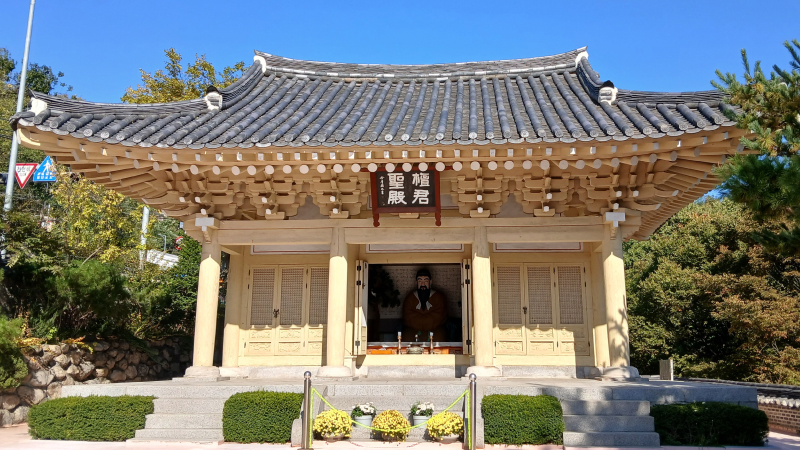HwangHakJeong
Summary
- Traditional archery practice field.
- This site has historical significance and offers a traditional Korean archery experience.
- Meaning of name : Golden Crane Pavilion. (Known as a spot where cranes would fly in)
Historical Background
- Established in 1898 during the Korean Empire period by king Gojong
- Originally located within Gyeonghuigung Palace
- Used as an archery practice site (sajung) where Gojong occasionally practiced archery
- In 1922, when the Japanese colonial government demolished Gyeonghuigung Palace to build a school, Hwanghakjeong was relocated to its current site north of Sajikdan, at the foot of Inwangsan Mountain. This location was previously the site of Deunggwajeong, another archery pavilion.
Built in the site of Deunggwajeong
Deunggwajeong was one of the five famous archery pavilions in western Seoul where Joseon warriors practiced archery. Although archery was not directly abolished by the Gabo Reform, the introduction of modern military practices led to the decline of traditional archery in Korea.Hwanghakjeong stands as a living testament to Korea’s rich archery tradition, offering visitors a glimpse into this ancient martial art while preserving an important piece of Korean cultural heritage
Public Archery Experience
Currently, Hwanghakjeong offers archery experiences for the general public:
- Every Friday morning
- Last Saturday morning of each month
- Biannual Korean traditional archery classes (Gungdo) are also available
Additional Info.
- Only Korean homepage (https://hwanghakjeong.org/)
- There is also known to have a small archery exhibition room to show traditional Korean archery.

Pictures were taken at November 2024.
Under degugging
Near By
Dangun Shrine
The Dangun Shrine has a significant historical background : The shrine houses portraits and statues of Dangun Wanggeom, the legendary founder of Korea. Every year on Gaecheonjeol (National Foundation Day), rituals and commemorative events are held here.In 1922, when the Japanese colonial government converted Sajikdan into a park, a Japanese Shinto shrine was built on the site. Koreans were forced to worship at this shrine. However, after Korea’s liberation in 1945, this shrine was demolished.In the late 1960s, as part of efforts to eradicate remnants of Japanese colonial rule, the current Dangun Shrine was constructed in traditional Korean hanok style on the site where the Japanese shrine once stood.This historical progression reflects Korea’s journey from colonial oppression to reclaiming and celebrating its national identity and founding mythology. The Dangun Shrine now stands as a symbol of Korean cultural heritage and resistance against foreign domination.
